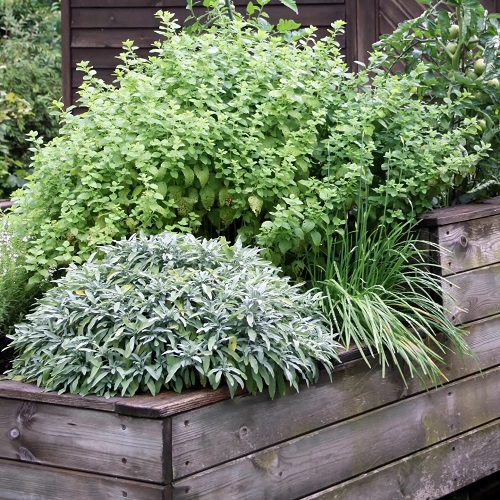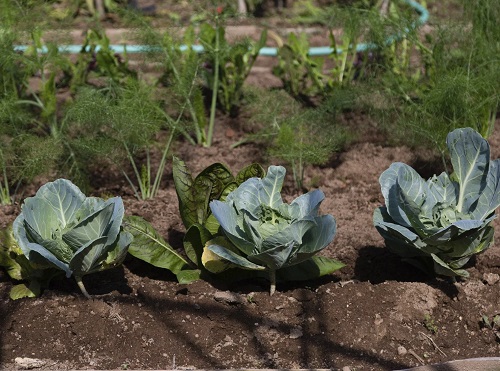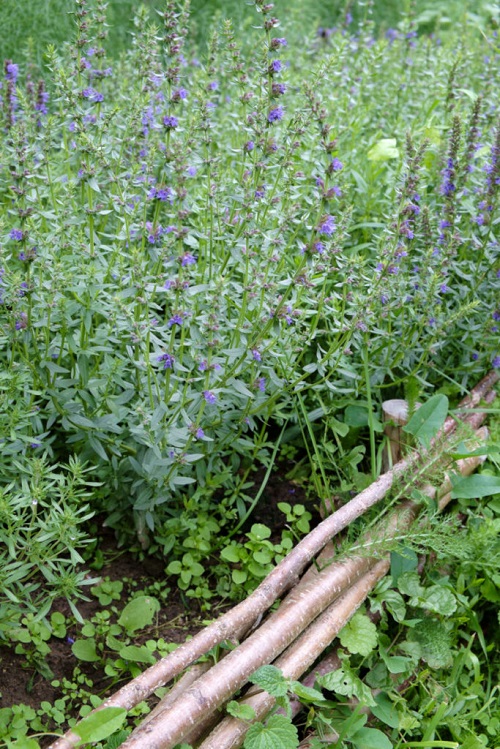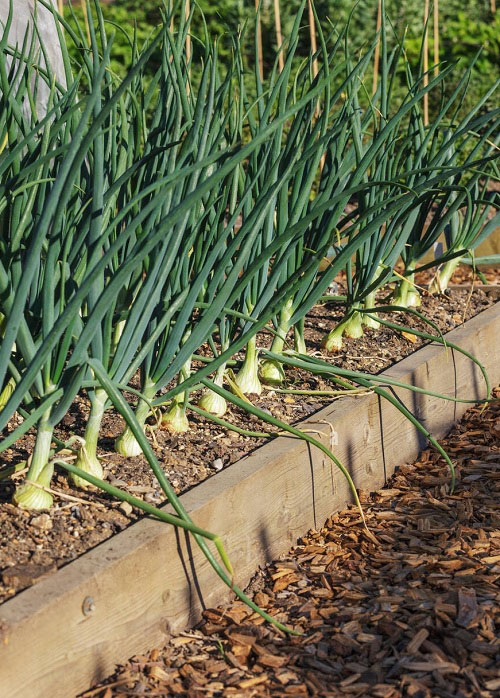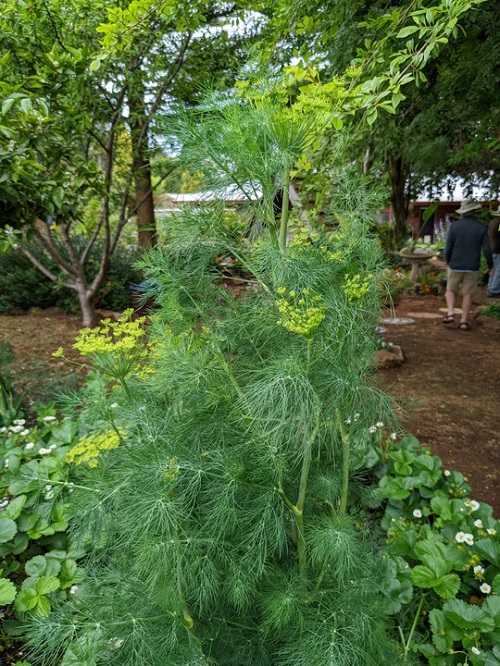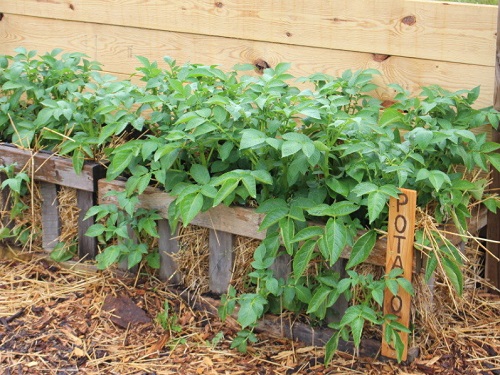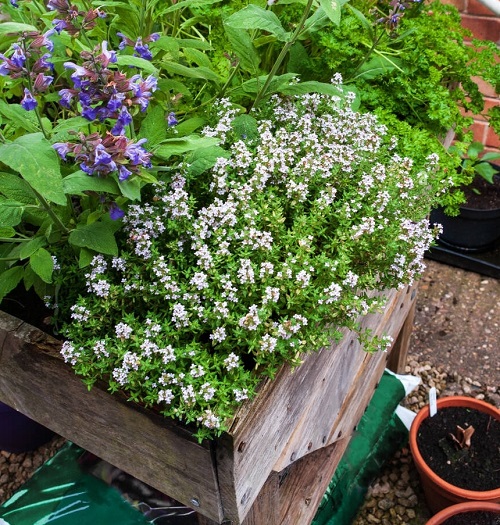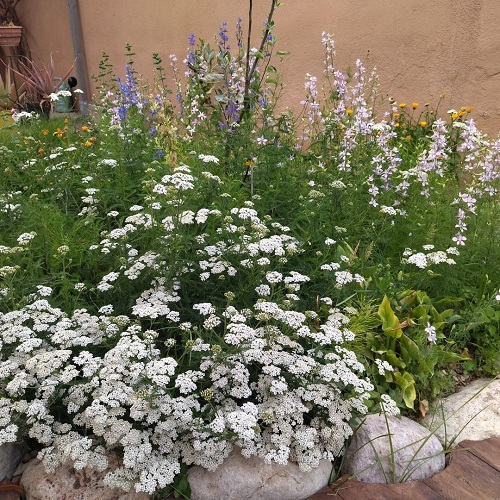Here is the list of the Best Cauliflower Companion Plants to maximize growth and flavor to ensure the best harvest!
By selecting the Best Cauliflower Companion Plants, you can enhance the growth, health, and overall productivity of your garden.
Check out 31 Best Companion Plants for Eggplants here
Best Cauliflower Companion Plants
1. Sage
Botanical Name: Salvia officinalis
The first cauliflower companion plant on the list is sage. Its earthy fragrance acts as a natural pest deterrent, while its delicate light blue blossoms attract beneficial pollinators like parasitoid wasps and hoverflies.
Learn about Growing Sage In Pots here
2. Fennel
Botanical Name: Foeniculum vulgare
Every part of fennel, including its yellow umbel flower clusters, is edible and attractive to beneficial insects like parasitoid wasps, ladybugs, butterflies, and bees. Ladybugs consume aphids, while non-stinging wasps target aphids and brassica caterpillars.
With moderate water requirements and deep roots, fennel poses no competition concerns for cauliflower.
Here is How To Grow Fennel in a Pot
3. Garlic
Botanical Name: Allium sativum
Garlic possesses a strong, pungent aroma that repels pests, making it a great cauliflower companion plant. Notably, this bulb releases sulfur compounds with antifungal properties into the soil, enhancing the resistance of both garlic and neighboring plants to soilborne fungi.
Here is How to Grow Garlic Indoors
4. Hyssop
Botanical Name: Hyssopus officinalis
There are two perennial hyssop varieties to consider: “true” hyssop (Hyssopus officinalis) and anise hyssop (Agastache foeniculum).
However, if you’re seeking a trap crop, true hyssop is the ideal choice. It lures pests that commonly feed on cauliflower, including brassica caterpillars, flea beetles, and slugs.
Is Is Cauliflower Man Made? Cauliflower History & Origin Learn here
5. Onion
Botanical Name: Allium cepa
Onions emit a pungent odor that can help repel pests such as aphids, cabbage worms, and carrot flies, which are common pests that can affect cauliflower, making them one of the best cauliflower companion plants.
By interplanting onions with cauliflower, you may reduce the risk of pest infestations and minimize damage to your cauliflower crop.
Here is Everything About Growing Onions In Pots
6. Marigold
Botanical Name: Tagetes spp.
Marigolds are known for their strong scent, which repels many common pests that can affect cauliflower, such as aphids, cabbage worms, and whiteflies. The strong aroma of marigolds acts as a natural deterrent, helping to reduce the risk of pest infestations in your cauliflower crop.
They also attract beneficial insects, such as ladybugs and hoverflies, which feed on pests like aphids and caterpillars. By planting marigolds near cauliflower, you create an inviting environment for these beneficial insects, promoting natural pest control in your garden.
Here are the Best Types of Marigolds + How to Grow them in Pots
7. Peppermint
Botanical Name: Mentha x piperita
The next cauliflower companion plant on the list is peppermint. The presence of peppermint attracts pests like brassica caterpillars, flea beetles, and nematodes, diverting their attention away from your main crop.
The fragrance of peppermint does not attract aphids and cabbage moths, providing additional protection for your garden.
8. Dill
Botanical Name: Anethum graveolens
Annual dill is often harvested for its fragrant, finely cut leaves, which can prevent it from flowering. Its umbels, or flattened flower heads, adorned with tiny yellow flowers, attract a wide variety of beneficial insects.
These include pollinating bees, butterflies, hoverflies, ladybugs, and lacewings, which feed on aphids. Moreover, parasitoid wasps are drawn to the flowers and lay their eggs in and eliminate brassica caterpillars and aphids.
Here is Everything About Growing Dill in Pots
9. Nasturtium
Botanical Name: Tropaeolum spp.
Edible annual nasturtium adds a beautiful touch as a garnish on chilled summer plates. Its creeping growth habit helps cool the ground and suppresses weeds.
The foliage acts as a magnet for aphids, flea beetles, and whiteflies, diverting their attention from maturing vegetables. Nasturtium is an excellent trap crop.
Here is How to Grow Nasturtium in a Container
10. Potato
Botanical Name: Solanum tuberosum
Potatoes and cauliflower have different growth habits. Potatoes grow vertically, while cauliflower has a more compact growth habit. By interplanting them, you can make efficient use of space in your garden, maximizing your yield per square foot.
Potatoes are known for their ability to shade out weeds with their dense foliage. By planting potatoes alongside cauliflower, you create a denser planting area, which can naturally suppress weed growth.
Here is How to Grow Potatoes in Pots
11. Thyme
Botanical Name: Thymus vulgaris
Thyme has a strong aroma that can help repel pests, such as cabbage worms, aphids, and flea beetles, which are common pests that can affect cauliflower.
The fragrance of thyme can act as a natural deterrent, reducing the risk of pest infestations and minimizing damage to your cauliflower crop.
Thyme is a low-maintenance herb that is tolerant of various soil conditions. Its deep root system can help improve soil structure by aerating the soil and enhancing drainage.
Learn about Growing Thyme in Containers here
12. Oregano

Botanical Name: Origanum vulgare
Oregano has strong aromatic compounds that can help repel pests, including cabbage worms, aphids, and flea beetles, which are common pests that can affect cauliflower.
lanting oregano near cauliflower can allow for convenient access to fresh oregano leaves when cooking with cauliflower. The combination of oregano’s aromatic and savory qualities can enhance the taste of cauliflower dishes.
Here is How to Grow Oregano in Pots
13. Yarrow
Botanical Name: Achillea millefolium
Yarrow flowers are known to attract beneficial insects such as ladybugs, lacewings, and parasitic wasps. These insects prey on common cauliflower pests like aphids, caterpillars, and beetles, providing natural pest control.
Yarrow has dense foliage that can help suppress the growth of weeds. When planted alongside cauliflower, the dense growth of yarrow can shade out weeds, reducing competition for resources such as nutrients, water, and sunlight.

